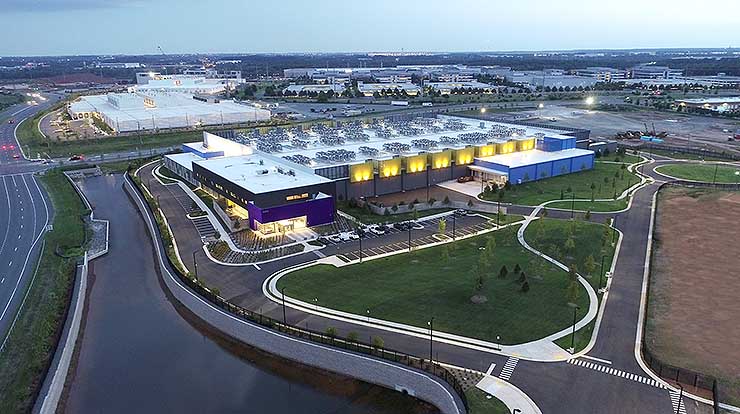In northern Virginia, 30 miles west of Washington, there is an ever-growing number of data companies in a corridor, dubbed “data alley”. It forms part of the larger Dulles Technology Corridor in the state. It houses servers belonging to Amazon, Google and many others.
On the surface, none of this may seem earth-shattering. However, what may shock you is that it’s estimated over 70% of the global internet traffic passes through this expensive, complex and burgeoning technological hub.
So, this morning when you were searching bus or train times, or even while you were browsing the web and stumbled across this article, chances are that your connection ran through this part of Loudoun County at some point.
The drawback? These data centres are energy gobblers, both for powering the servers, but also for cooling them, creating a huge carbon footprint. They make-up 2% of all the power use in the USA (100 billion kilowatt-hours of electricity). According to Greenpeace, Amazon Web Services have built the heart of their technological infrastructure in the state but are only running these centres at around 12% renewable energy.
So what does this mean for us and our professional use of storing data on these servers? We cannot get away from the fact we need to use these services, but we can look at the volume of what we upload? Thinking of the film and media industry as a whole, is it really necessary to store all our rushes on servers? Can we put this on LTO, a much cheaper and lower cost solution both financially and for the planet? Consider the C02 creation of storing 10 Terabytes over five years:-
Server: 9000 kg C02
Hard Drives: 4000kg C02
LTO Tape: 35kg C02
So — carry on using data centres and servers, but for long term storage let’s put it onto something that won’t make our carbon footprint so massive we have to hide from the annual audit people. They are coming.
This article forms a series of discussions around:
The best digital workflows for post production
How to store my digital rushes and masters
Film production and data storage
Low carbon data storage
